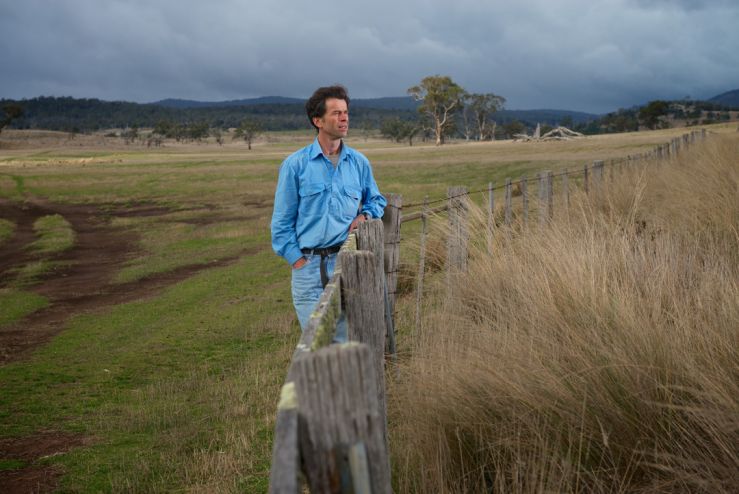New conservation model to protect biodiversity on farms in the Tasmanian Midlands

Ross farmer and MCF participant Julian von Bibra at his property, 'Beaufront' - photo by Matt Newton, courtesy Bush Heritage Australia
95% of the Tasmanian Midlands is privately owned, making a new approach to conservation vital for protecting an Australian biodiversity hotspot
Tasmanian Midlands is home to 32 nationally threatened species and more than 180 plants and animals threatened at State level
A landmark $3.3 million conservation fund that aims to conserve biodiversity on farms in the Tasmanian Midlands will be launched on 4 June at ‘Beaufront’ in Ross; one of ten properties that is now signed up to the fund. The fund offers farmers new stewardship agreements to pay for long-term conservation management on their land in a region that is one of Australia’s 15 biodiversity hotspots.
The fund is a partnership between Bush Heritage Australia and the Tasmanian Land Conservancy and will help farmers safeguard the last pieces of remnant native grasslands and grassy woodlands without the need to acquire land.
Work has begun with ten Midlands landowners situated between Epping Forest and Tunbridge in the Northern Midlands. The fund will have the capacity to support many more landowners to conserve habitat on working farms as it works towards the $10 million capital target by 2020.
Landowners who take up stewardship agreements are paid an annual fee for putting an agreed portion of their land under conservation management for a minimum period of 10 years. The stewardship agreements then make annual performance payments for meeting conservation targets, with the goal to roll over for five-year terms.
“What makes this new stewardship agreement model more viable for farmers than traditional conservation covenants is that it is underpinned by a fund that can provide money for conservation in perpetuity,” says Andy Myer, MCF Chairman and Bush Heritage Australia vice-president.
The landowners also receive conservation management resources, including ecological monitoring support to ensure the farm-based conservation programs are well supported.
“The Midlands is an important working landscape which needed a fund that works for landowners. In order to protect the last pieces of remnant native grasslands and grassy woodlands left in this important biodiversity hotspot, lasting conservation outcomes need to be balanced alongside livelihoods, and the MCF delivers on both fronts,” says Jane Hutchinson, Tasmanian Land Conservancy CEO.
Landowner Julian von Bibra, who is conserving 190 hectares of endangered grasslands on his farm in the Northern Midlands under the fund, says: “The MCF means that we now have a model that is committed to conservation and farmers working together for shared goals. Essentially, conservation now has a place on the balance sheet.”
The MCF is part of a broader ‘Midlandscapes’ project which has a goal of ensuring ten per cent (or 64, 000 hectares) of the Tasmanian Midlands Biodiversity Hotspot is conserved by 2020.Native species protection priorities include vulnerable marsupials such as the Tasmanian bettong (a species extinct on the mainland) and spotted-tailed quoll; wedge-tailed eagles; critically endangered lowland grasslands; and nationally threatened plants such as the tunbridge buttercup and pungent leek-orchid.

